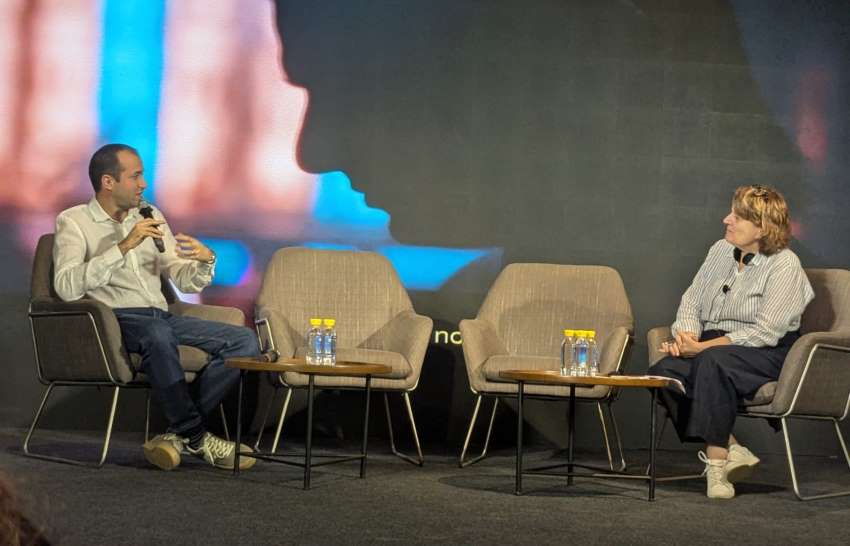FW
"China still holds a 31.5 percent share in the US textiles and apparel market. However, its share in world exports declined nearly 2 per cent in 2019 from the previous year. Latest Chinese Customs statistics from January to August 2019 reveal among the top 10 garment exporters in China, American brands such as Nike and Gap have maintained sustainable growth"
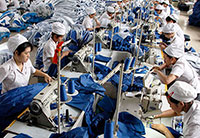 Even amidst the ongoing tariff war between the United States and China, Chinese textiles and apparel sector seems to be faring quite well. Recent data reveals, China’s total export of textiles and clothes in 2019 recorded a 7.9 per cent year-on-year increase to reach $48.96 billion. However, the country’s exports slowed down 1.6 per cent during the first half of the year. Of this, clothing accounted for 73 per cent while textiles made up the remaining 27 per cent of total exports.
Even amidst the ongoing tariff war between the United States and China, Chinese textiles and apparel sector seems to be faring quite well. Recent data reveals, China’s total export of textiles and clothes in 2019 recorded a 7.9 per cent year-on-year increase to reach $48.96 billion. However, the country’s exports slowed down 1.6 per cent during the first half of the year. Of this, clothing accounted for 73 per cent while textiles made up the remaining 27 per cent of total exports.
China still holds a 31.5 percent share in the US textiles and apparel market. However, its share in world exports declined nearly 2 per cent in 2019 from the previous year. Latest Chinese Customs statistics from January to August 2019 reveal among the top 10 garment exporters in China, American brands such as Nike and Gap have maintained sustainable growth.
Brands, retailers cut back China operations
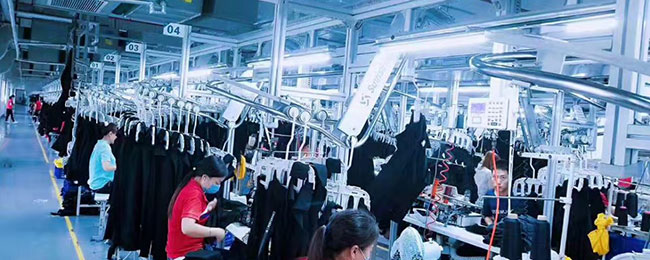
Many US brands and retailers are planning to scale-down their operations in order to avoid the risk fuelled by future uncertainty. A recent survey conducted during the Sourcing Summit New York revealed that around 35 percent attendees from major global apparel brands and retailers planned to reduce their sourcing from China by around 50 percent. They plan to diversify their sourcing to other alternatives like Vietnam, Bangladesh and Cambodia though many of them still rely on inputs from China.
Countries like Vietnam, Cambodia and Bangladesh offer these companies an opportunity to serve US brands and retailers and also avoid tariffs. In the next five years, these companies plan to transfer 20 to 30 per cent of their production to overseas factories.
Unparalleled efficiency enables China retain position
However, China still remains the centre of manufacturing for apparel and textile companies as the country offers unparalleled efficiency beyond the reach of other Asian nations. Easy availability of raw materials in China also enhances its supply chain efficiency and speed to market.
The delivery time for products with complex procedures is almost a month slower in Southeast Asia than in China. Therefore, brands selling fast-fashion are more in numbers in China than in any other country. The status of progress on talks toward an agreement on trade between the US and China still remains unclear however, China hopes to reach an agreement soon.
LVMH plans to take over Tiffany & Co for $16.9bn including net debt, equivalent to nearly four years’ sales at the company. The acquisition consolidates LVMH’s position in the luxury market. In the past five years, the company’s shares have risen threefold which includes a 60 per cent run since January. The brand is currently worth around €206bn (£175bn) and now vies with Royal Dutch Shell as the most valuable firm based in the EU.
This will be 76th brand in the Parisian group’s portfolio, joining Louis Vuitton, Dior and Veuve Clicquot champagne. LVMH emerged as the most obvious buyer for Tiffany in part because its scale begets advantages not available to smaller bauble-peddlers. The brand’s shareholders had pestered management to improve margins and raise sales fast, unduly hurrying its turnaround efforts.
LVMH will give Tiffany time and money to renovate stores and push upmarket.
Intense price competition among readymade garment makers in Asia has resulted in reduced profit margins for Bangladesh clothing exporters. The country has to import most of the raw materials for the sector. Apparel exports of the country have declined in recent months due to worldwide sluggish demand while its competitors have seen a rise. Bangladesh has a higher lead time and it imports cotton from abroad which increases the cost and impedes its exports.
On the other hand, since Pakistan and Vietnam source most raw materials locally, their products are marked with lower prices. In the first four months of the current fiscal year apparel exports of Bangladesh decreased 6.67 per cent. On the other hand, Vietnam’s earnings from apparel exports increased by 10.54 per cent. Also the inflow of investment into Bangladesh’s garment sector is sluggish both in terms of new entrepreneurship and expansion as buyers are not paying good prices. Europe is the pivotal export market for Bangladesh but has reduced imports. In general the online apparel market is affecting export growth.
In the last seven months 59 garment factories have shut down and 25,900 workers have lost their jobs. In July-October of this fiscal year, Bangladesh’s earnings from knitwear exports were up 5.73 per cent.
According to latest Chinese Customs Statistics from January to August 2019, China’s exports of textiles and apparels to the US, during the first half of 2019, reached $21.23 billion, with growth slowing by 1.6 per cent year over year. Clothing accounts for 73 per cent of those exports, and textiles make up the other 27 per cent.
Growth of China’s textile exports is higher than in the garment sector. This is mainly due to the incompleteness of supply chains of low-cost countries like Bangladesh and Cambodia. Shortage of raw materials and fabrics boosted China’s textile exports as well. A survey conducted at last month’s Sourcing Summit New York revealed 35 per cent attendees from major global apparel brands and retailers intend to reduce their China sourcing.
Those investments are going toward setups in places like Vietnam, Cambodia and Bangladesh, in order to retain an opportunity to serve US brands and retailers wherever they’re headed, and to avoid the tariffs that are making things tricky in China, however, many still rely on inputs from China.
For some products with complex procedures, the delivery time in Southeast Asia is at least one month slower than in China. Therefore, brands with fast-fashion items that need to be replenished quickly are still better off staying in China.
Denimsandjeans will be held in Japan, March 4 to 5, 2020, Vietnam, May 28 to 29, 2020, and India, July 8 to 9, 2020.
Organisers are expecting the shows to be bigger and better. Vietnam has been becoming one of the most favorable and important sourcing destinations, especially for US and EU buyers. Vietnam has signed a free trade agreement with Europe, which will create much interest from buyers in the EU. A large number of garment exporters are expected to join the Denimsandjeans shows in 2020 as the event has gained more traction. The industry has embraced these shows as they are focused and niche. The prime attraction of these shows has been the visits of decision-makers from domestic as well as international brands and the presence of almost all who matter in the industry. The knowledge sessions by international experts on important issues also create great interest among professionals who seek to upgrade their knowledge.
Vietnam has currently about 6,000 garment related companies that employ 2.5 million people. As far as India is concerned, denim has been one of the apparel segments that have seen maximum growth in the last decade. In the last 10 years, the growth has been over 10 per cent a year, making the country the second largest consumer of denim after China. Though there has been a correction of late, innovative products still command a premium in the Indian market.
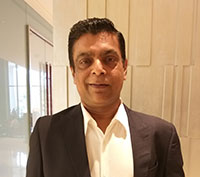 FSA, the only association representing wholesale fabric suppliers in the entire garment industry, organises two ‘Textrade’ fabric fairs every year in Mumbai. The two-day event presents a golden opportunity to its visitors to showcase fabric creativity, design innovation, splash of colors and fashion extravaganza for the seasons. The association recently held the 25th edition of the fair. Nilesh Shah, Ex-Secretary and Founder Member, Fabric Suppliers Association of India, elaborates on this fair and the association.
FSA, the only association representing wholesale fabric suppliers in the entire garment industry, organises two ‘Textrade’ fabric fairs every year in Mumbai. The two-day event presents a golden opportunity to its visitors to showcase fabric creativity, design innovation, splash of colors and fashion extravaganza for the seasons. The association recently held the 25th edition of the fair. Nilesh Shah, Ex-Secretary and Founder Member, Fabric Suppliers Association of India, elaborates on this fair and the association.
What were the reasons behind the inception of this fair?
As we shared a very good relationship with our traders, both of us were aware of the problems faced by each. However, we did not have a platform to address these problems. One of our old members suggested that we create such a platform that facilitates our interaction with each other. Thus, the idea of Fabric Suppliers Association was born. The association has been involved with all types of traders since the last 12 years and offers them a platform to share their grievance, experiences, etc.
How will this trade fair benefit the industry?
This is the only trading community fair which is a one stop shop for all garment manufacturers across India. The fair showcases a wide range of garments including ladies wear, men’s wear, kids wear to winter. Held twice in a year, the fair is organised in a proper systematic manner. It showcases all upcoming garment trends six months in advance.
What are your reasons for restricting this fair to Mumbai only?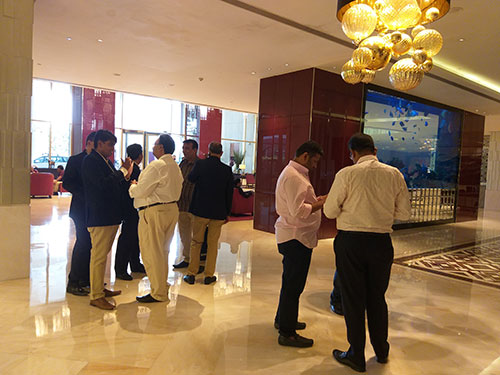
We wanted to gauge the fair’s performance for atleast 10 years before expanding it to other cities like Delhi, Kolkata, Chennai, Bengaluru and overseas. We also plan to expand this fair to other countries like Bangladesh, Sri Lanka and Dubai which not only enable our traders to display their collections across the world but also allow our customers to avail of latest fashion at affordable rates. Another of our plan includes foraying into South East Asia market which is a major manufacturing hub.
Do you think other Indian cities will give you the same kind of foothold that Mumbai provides?
All Indian cities have their distinctive features. Even Bengaluru, Kolkatta and Delhi are as promising and happening like Mumbai. They also house some good garment manufacturers besides a huge market. We plan to cover all these cities on the basis of the response we get in these markets and how many new members we add to our association.
There are a lot of garment manufacturers mushrooming in Mumbai. How many of these were you able to tap?
We were able to reach out to almost 90 per cent of our customers and convey the fair dates two months in advance. This was done through our huge mailing list and a large network of people. We conveyed this message on pan India basis which enabled these visitors to book their flight tickets at cheaper rates. By 2020, we aim to reach out to 100 per cent of our customers across India.
How helpful has the government been in this? Did you seek its support?
We have been conveying our problems to the government which has been quite serious about addressing our concerns. It is trying to address several of our issues including garments imports from Bangladesh, difficult working conditions, employment issues etc. Slowly and gradually, the government is realising the importance of this sector as the second largest employer in the country.
Do you think India’s FTA with Bangladesh restricts its growth in garmenting?
This was a concern previously but now the textile ministry is taking a serious note of garment imports from Bangladesh. It addresses all the challenges and sorts out abnormalities and loop holes. In the next few months, the domestic industry will be on par with the Bangladesh industry.
The garment industry’s diversified portfolio will make it the next big thing and a one stop shop. We can be a supplier to not only our nation but the entire world.
Vietnam is coming up in a very big way. Would you consider it as a challenge for India?
At present it is a challenge. However, India has a large textile manufacturing base which Vietnam does not. In a few years time, all the inadequacies will be sorted out and we will flourish just like Vietnam. Also, Vietnam does not produce all the fabrics like Bangladesh and they are ultimately shipped from India. Therefore all big companies want to set up their manufacturing and as well as sourcing bases in India.
What is the status of FSA trade fairs? How many exhibitors are there and what is the foot fall expected from this particular event?
At present, around 100 exhibitors are participating in this event while over 1,500 people have registered with our company. In all, we expect a footfall of 5,000 people from this event which is quiet a good number considering that this is predominantly a garment manufacturers’ fair and not retailers’.
How do you deal with defaulters?
We have a processing arbitration committee that scrutinises each and every complaint of our members. We try to resolve these grievances amicably. The committee helps in making the trade healthier and flourishing for the new generation. It has received a tremendous response from our members.
Anything else you would like to highlight about FSA?
Both the FSA committee and FSA Arbitrary committee are doing a fantastic job and we are quite optimistic about their future growth prospects.
Following the immensely successful Red Runner which took its cues from the world of running and the Aurelien inspired by the basketball courts, French fashion designer Christian Louboutin recently launched a new sneaker collection – Happyrui.
This season, the designer pays tribute to the iconic tennis shoe that made fashion history both on and off the courts in the 70s. Boasting a new specially developed rubber platform outsole and a singular upper, the Happyrui low-top sneaker is as stylish as it is easy to wear.
From its new metallic CL signature that echoes 70s varsity letters to its contrasting toe cap and singular eyelet system, every detail on this low-top sneaker nods to vintage retro style. True to Maison’s design, codes, the HAPPYRUI mixes materials and textures including suede, lamé leather and a shimmering sequin body, whilst some versions also come with signature spike-adorned a toe cap.
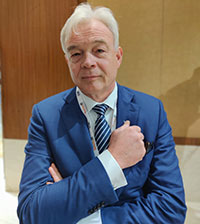 Alexander, the Reinach, Switzerland-based diversified provider of dyes and specialty chemicals, serves the branded and performance textiles, packaging and paper, and coatings, adhesives and sealants markets globally. The leading company operates a highly integrated, customer-focused platform that delivers specialized performance and color solutions in over 100 countries. With 3,000 employees spread over 35 countries and 26 production sites the company has created a niche in its space. Alexander Wessels, CEO, Archroma speaks to Fashionating World in an exclusive interview and elaborates on the company’s operations, products and sustainability in the dyestuff industry.
Alexander, the Reinach, Switzerland-based diversified provider of dyes and specialty chemicals, serves the branded and performance textiles, packaging and paper, and coatings, adhesives and sealants markets globally. The leading company operates a highly integrated, customer-focused platform that delivers specialized performance and color solutions in over 100 countries. With 3,000 employees spread over 35 countries and 26 production sites the company has created a niche in its space. Alexander Wessels, CEO, Archroma speaks to Fashionating World in an exclusive interview and elaborates on the company’s operations, products and sustainability in the dyestuff industry.
Tell us more about Archroma?
Archroma is the largest supplier of chemical and dyes to the global textile and paper industries. We are a major advocator of sustainability and drive the efficiency of our natural resources which enables us to reduce production costs.
What is the USP of your products?
We invest a massive amount of capital in sustainable processes. Besides, we scientifically map new methods to optimise our process and devise new sources of dyeing. Our dyes are made from natural waste from the color red. Though many other suppliers make similar things but they neither have the required scientific back up nor do they invest much in new solutions.
Have you been able to convince everyone that sustainability and cost are not mutually exclusive?
Yes, we have. Archroma has made these investments to help manufacturers across the world. The use of our machines is growing globally. In Bangladesh, the market share of our systems has grown from 6-7 per cent to 40-50 per cent. We use advanced technologies that reduces the usage of fiber and energy driving down overall manufacturing cost.
Which country leads in sustainability? Where is India positioned?
I don’t think any particular part of the world is more sustainable than the other. It is more related to individual brands. Brands like Patagonia, Adidas make consistent investments in sustainability. India too has the potential to be the leader in sustainability if it invests more in aspects like technology, production, etc. It can also lead in cotton recycling and be a sustainable user of cotton.
Fashion is perceived as the second most polluting industry after fossil fuels. Please Comment?
That is not the case. Fuels, agriculture and energy are known to be more polluting than textiles. The carbon dioxide emissions from the textile industry result in only 6 per cent of global emissions. Though the industry uses a lot of water particularly in water pressured areas like Bangladesh, Pakistan, India, some parts of China, we have introduced solutions that help save water. For example, technologies used in denim dyeing save around 90 per cent of water.
However, most products still consume a lot of water. Why?
This is the responsibility of the entire industry. To address this, brands need to start selling eco-friendly apparels instead of cheap clothing. They need to provide good value for product. There are also a couple of corporate initiatives like sustainable peril coalition that we are committed to. However, there is still a lot to be done on different levels to become more sustainable. The current government’s Make in India initiative enables us to capture this fast.
With a slowdown, customers are not willing to pay beyond a certain amount for apparels. Does this affect your capacity to innovate?
Though ongoing trade wars are not stimulating global growth, they are providing opportunities to countries like India and China to increase domestic demand. India is likely to become a bigger consumer market than Europe in the next 10 to 20 years. So, we need to take these challenges as an opportunity to grow.
With global supply chains rebalancing, re-shifting and restructuring, where do you see Asia and particularly India, Bangladesh in this context?
In the short term, Vietnam, Bangladesh, India will profit from whatever is happening. However, in the long term, if this regional trade blocks continue, trade on the global level it will be restricted and be more localised. Asia will be the largest consumer market in the next few years and actually overtake every other continent. India and Bangladesh are really well positioned to take advantage of these situations given that they do not engage in any trade war what so ever.
As for reshoring, with changing landscapes the paradigm of manufacturing is also changing. Will it take away from Asia?
Of course, digitalisation will lead to different business modules where individualization will be possible and maybe within 10 years you can actually sit behind your computer to completely design your jeans yourself, maybe five years and two days later it is on your door post. That will certainly emerge as a part of the market, of course for the mass market there is no module.
How optimistic are you about overall growth because the GDP has dropped down to 3 per cent which is the worst in last 10 years?
Though many countries are going through a recession, there are signs of growth in some. We don’t predict the future of a company on the basis of a short recessionary cycle. We look for long term outlook.
At the micro level, how do you see apparel and textile industry, stacked up and growth going forward?
I am too remote to make a forecast on the domestic level. But, internationally the key is to stay competitive. Superior quality, good traceability and good sustainability will drive the industry forward.
What is your message as a global citizen?
Firstly, it is important for us to realise that it is not only about a green portion but taking big steps to make this industry truly sustainable. Our traders have solutions for complete circularity. There is no mass market or would never be mass market but I think every step if they take toward making their natural resources better, we should do and we are obliged to our children to do so and I think everyone in the textile industry who denies it is not worthy to be a leader.
"Most brands were willing to share initiatives for promoting living wages. They were also transparent about their limitations in producing in developing countries such as Bangladesh, Cambodia and Vietnam, as the wage-setting mechanisms and social dialogue in these countries are still at a nascent stage"
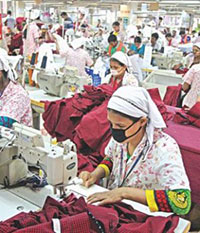 Even after a year of Dutch financial institutions forming an unprecedented coalition to demand minimum living wages for workers, the wage landscape still remains a mixed bag with no single solution offered by two brands. A recent review of 13 investee apparel brands by Platform Living Wage Financials’ garment and footwear working group reveals so far only Adidas has improved its transparency initiatives from last year. Now, the brand not only provides an insight into wage structure but also reveals information about collective bargaining in its supply chains and operation of its grievance and remediation mechanisms. The brand also pilots an employee credit cooperative that allows its factory workers to earn extra income through dividends and profit sharing.
Even after a year of Dutch financial institutions forming an unprecedented coalition to demand minimum living wages for workers, the wage landscape still remains a mixed bag with no single solution offered by two brands. A recent review of 13 investee apparel brands by Platform Living Wage Financials’ garment and footwear working group reveals so far only Adidas has improved its transparency initiatives from last year. Now, the brand not only provides an insight into wage structure but also reveals information about collective bargaining in its supply chains and operation of its grievance and remediation mechanisms. The brand also pilots an employee credit cooperative that allows its factory workers to earn extra income through dividends and profit sharing.
Besides, it has created a standard-minute costing system that creates further transparency in the company’s product cost for materials, labor and overhead.
Some other brands surveyed by the group were seen to be in the maturing phase. These include: Asos, Esprit, Gildan, H&M, Inditex (which owns Zara), KappaAhl, Marks & Spencer and Puma. They scored between 20 and 30 points on transparency scale. Four companies scoring between 10 points to 20 points were classified as being in the developing phase. These included Asics, HanesBrands, Renner and VF Corp.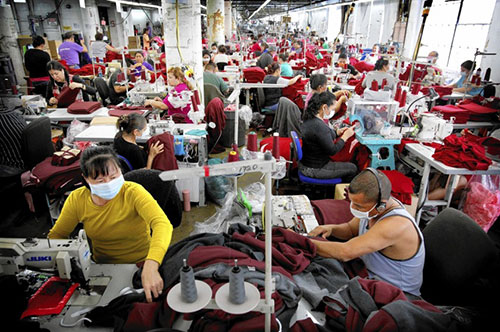
Most brands were willing to share initiatives for promoting living wages. They were also transparent about their limitations in producing in developing countries such as Bangladesh, Cambodia and Vietnam, as the wage-setting mechanisms and social dialogue in these countries are still at a nascent stage. However, the group expressed its desire for more ownership to be taken of living wage by brands, particularly in terms of sharing information from multi-stakeholder initiatives on their websites or annual reports. Similarly, it noted that brands need to move from effort-based reporting to impact-based reporting. Though many of them report about their corporate processes to mitigate human rights, few indicate about their impact on the brand’s operations.
According to the group, a living wage would not only help brands create reliable relationships with their suppliers but also foster a happy and healthy workforce.
"With sustainability gaining traction across the globe, fashion brands are going all out to align operations with better environmental practices. This was evident from all the fashion shows held last month in New York, London, Milan and Paris which focused on sustainability. Spanish fashion retailer Zara announced its plans to go organic by 2025."
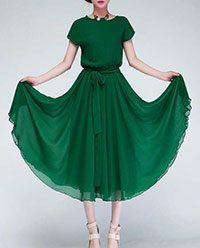 With sustainability gaining traction across the globe, fashion brands are going all out to align operations with better environmental practices. This was evident from all the fashion shows held last month in New York, London, Milan and Paris which focused on sustainability. Spanish fashion retailer Zara announced its plans to go organic by 2025. The brand also plans to make all its stores eco-efficient by the end of this year. This would enable it to reduce carbon emissions and reduce wastes.
With sustainability gaining traction across the globe, fashion brands are going all out to align operations with better environmental practices. This was evident from all the fashion shows held last month in New York, London, Milan and Paris which focused on sustainability. Spanish fashion retailer Zara announced its plans to go organic by 2025. The brand also plans to make all its stores eco-efficient by the end of this year. This would enable it to reduce carbon emissions and reduce wastes.
Promoting an ecological chain of thoughts
These initiatives are a major deviation from earlier times when brands did not focus so much on sustainability. They were more concerned about increasing profit margins which led them to churn out cheap clothing in bulk quantities. These clothes were then sold off in stores at a jet setting speed. However, faster production cycles resulted in increasing risk to labor health and huge waste accumulation as consumers began dumping garments frequently with changing fashion trends.
Waking up to the hazards of fast fashion, brands are promoting a more ecological chain of thought. Popular fashion retailers including H&M, Uniqlo, Benetton, Zara, etc, are making sustainability an intrinsic part of their value chain and ethos. For instance, H&M plans to use only sustainable cotton by 2020, Similarly, Japanese retailer Uniqlo announced plans to focus on five areas of action-change, energy efficiency, water stewardship, waste management and resource management as a part of its revised Environmental Policy introduced in June 2018. 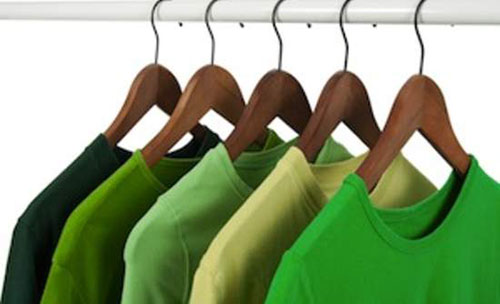
Slow fashion to replace fast fashion
Alongwith these initiatives, brands are considering alternate ways of being more responsible. They are opting for slow fashion, as against fast fashion, to become more sustainable. Uniqlo has developed a new technology in partnership with Japanese major Toray to incorporate recycled materials. The brand plans to collect pre-owned Uniqlo down products in Japan and send these to be recycled at its Toray facility.
‘Clothes on rent’ service is catching up. This reduces the purchase of excess clothes by the consumers, thus curtailing waste. The Clothing Rental, a rental service offers original pieces of clothing to its clients. The firm feels, the concept of renting clothes elongates their lifespan. It also leads to lesser production and promotes a sustainable way of being fashionable.
Changing shopping pattens
Consumers are realising the worth of living consciously. They are becoming more aware and sensitive to environmental issues. Brands too are educating consumers on efforts that can lead to positive shopping patterns. For instance, Uniqlo has introduced ‘Eco bags’ to replace plastic shopping bags. These bags are environment-friendly and help the brand to ensure a secure future.


